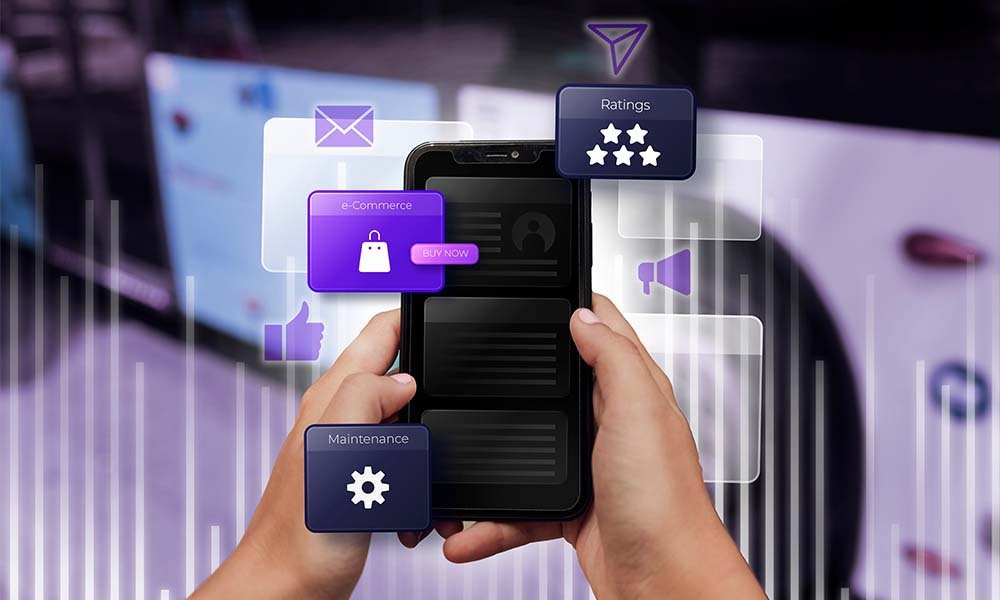
Basic Guide To Mobile App Development
The Apple App Store launched in 2008 with just 500 apps and the Google Play Store was also launched in 2008 with 16,000 apps. Since then, the number of mobile apps has significantly increased in terms of numbers and downloads. Today, there are over 5 million apps across Google Play Store (3.553 million) and Apple App Store (1.642 million), and there are 54,000 PWAs. This surge is because of the increase in the number of smartphone users and the resulting interest of businesses and users in mobile app development.
So, this is what all the fuss is about mobile app development, but what exactly is it and what options do you have? This is exactly what we are here to talk about. We have curated this guide to help you understand the basics of mobile app development. So, without further ado, let’s jump right into it.
What is Mobile App Development?
Mobile app development is the method of creating software applications for smartphones and tablets. It is the same as other software developments, like web apps. However, the difference is that these applications can use mobile-specific features, including GPS, Camera, Microphone, etc. All you need is to create a team of mobile app developers or get help from professional mobile app development services in USA.
Currently, Android and Apple apps dominate the market, whereas PWAs are still on the lower side. How can you do it for your brand? Here is the complete mobile app development process.
Mobile App Development Method
Below we have briefly described the mobile app development process so you can understand how apps are built.
1. Strategy
Every great app starts with an idea. Sit down with your peers or team and brainstorm some ideas to get started with. Ask yourself the following questions to design the path and strategy to move forward with:
- The purpose of the mobile app
- The problems you are looking to solve
- The money you are willing to invest
- The way you wish to build your app
It is essential to stick to the path you pave in this step and do not get carried away. Also, document everything, and create wireframes to ensure everyone is on board at all times.
2. Planning
The next step is to plan the whole thing out. Sit down with your team, or if you are working with a mobile app development agency in USA, schedule a meeting to plan things. This includes choosing your development platform, development method, development tools, SDKs, goals, and timeline.
This step also includes doing market research, where you look for competition and information. The things you need to figure out your competitors, target audience, unique factor, and the platform you wish to launch your app onto.
3. Design
The mobile app design process is the next crucial step in building a mobile app as it will determine the final look and feel of your app. You can try out different things, make some sketches, create storyboards, and build roadmaps.
This is the point where you can create an MVP or a Minimum Viable Product or a bare-bones app. Make sure to think about the user first as the user experience should be the first priority.
4. Development
Now is the time you actually build the app. This includes using the platforms and technology to create the back-end, APIs, and the front-end. You must finalize your development method, assemble your team or hire mobile app developers in USA, and start the process.
Some applications can be developed in a few months, while some may take up to six months or even a year. This all depends on the type of app you are building, the features you wish to integrate, and the overall complexity of the app.
5. Testing
Once the app is built, the work is still not done. You must send the final app to the QA team to carefully test it from every aspect. It is good if you have one in the house, but even if you don’t, you can get a mobile app development company in USA to do it for you.
The things you need to test are the overall design, features, performance, stability, and security. Also, test the app on all the platforms you are aiming for and test on different devices to ensure it works well no matter the phone.
6. Deployment
Once you are satisfied with the app and it turns out stable and well after the extensive QA testing, it is time to launch.
You can also go for a small launch for a small number of users to gather feedback and fix things before the final release.
Now, you must have learned the basics of how mobile apps are built. However, since there are different types of mobile app development, which one is right for you to go for? That is for you to decide as we will explain the different types of mobile app development next, so you can make a confident decision.
Types of Mobile App Development
Apps of today are different from the past. Here is a brief overview of the different types of mobile app development.
1. Native App Development
Native app development is to build native apps that are platform-specific, i.e., Android or iOS. You will need to take help from Android app developers or iOS app developers to ensure you get the desired results.
Native apps can use the device-specific features to their fullest potential. However, it means you will have to write code specifically for that particular operating system.
2. Cross-Platform App Development
Cross platform mobile app development can use the same code to build cross-platform apps for all the platforms. It will work natively on both Android and iOS devices.
There is no real difference between native and cross-platform native apps for the users, but the latter is more affordable and has a shorter development time.
3. Hybrid App Development
Hybrid apps may seem similar to cross-platform apps, but they are not. They are similar in the sense that you can use the hybrid app development to write the same code to help you build apps for both platforms.
Hybrid app development is somewhat more user-friendly, less technical, and can be done with basic knowledge.
4. Progressive Web App Development
Progressive Web Apps or PWAs development are apps that are delivered through the web and not installed natively on the device.
The latest innovations and technology have allowed mobile app developers to integrate a more native app experience inside the PWAs.
Final Takeaway
So, this ends our basic guide to mobile app development. It must have given you enough information to finally decide when to start building an app for your brand. You will need to have a reliable team or you can partner up with the best mobile app development company in USA to have professional consultation and support.
This will help you finalize the best course of action and build apps for users to grow your business with authority. Want to learn more from us? Get a free consultation from The Apptitude experts, or keep learning more till you are absolutely sure.

